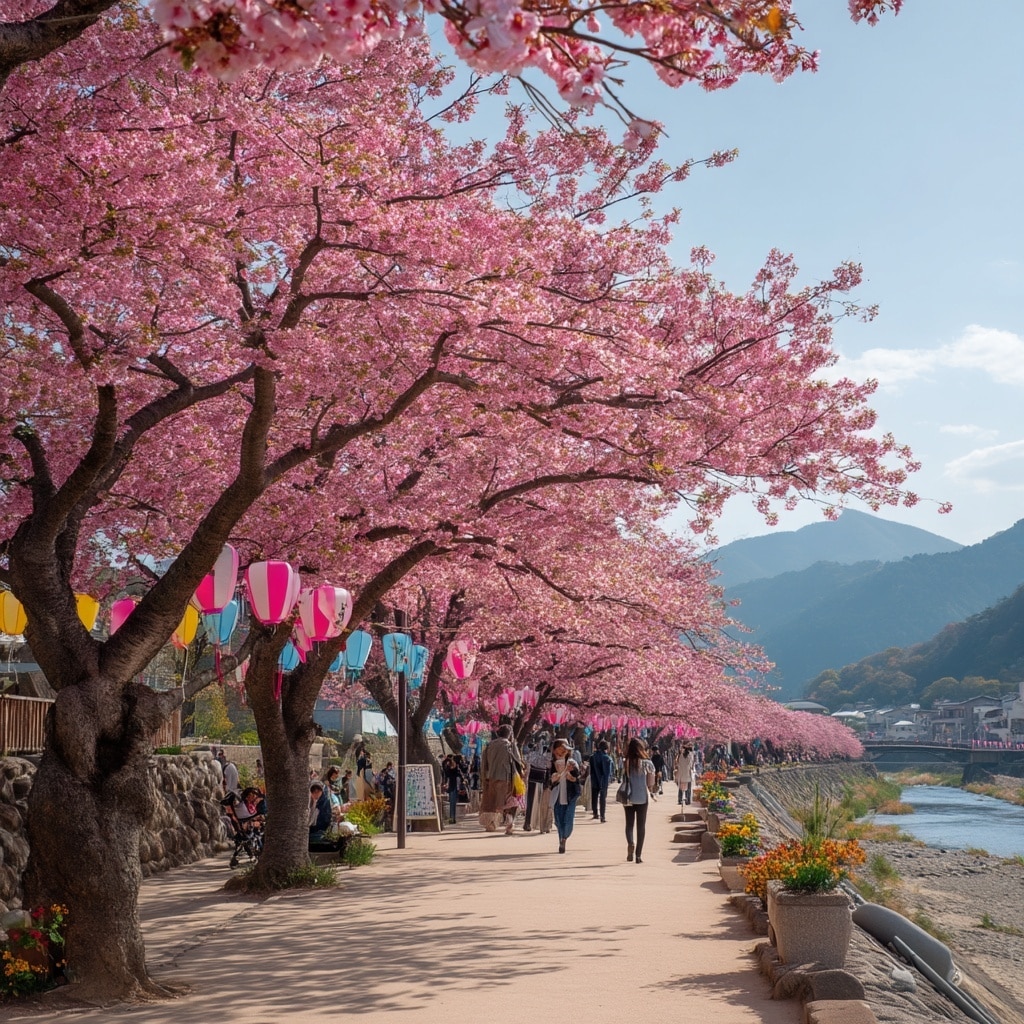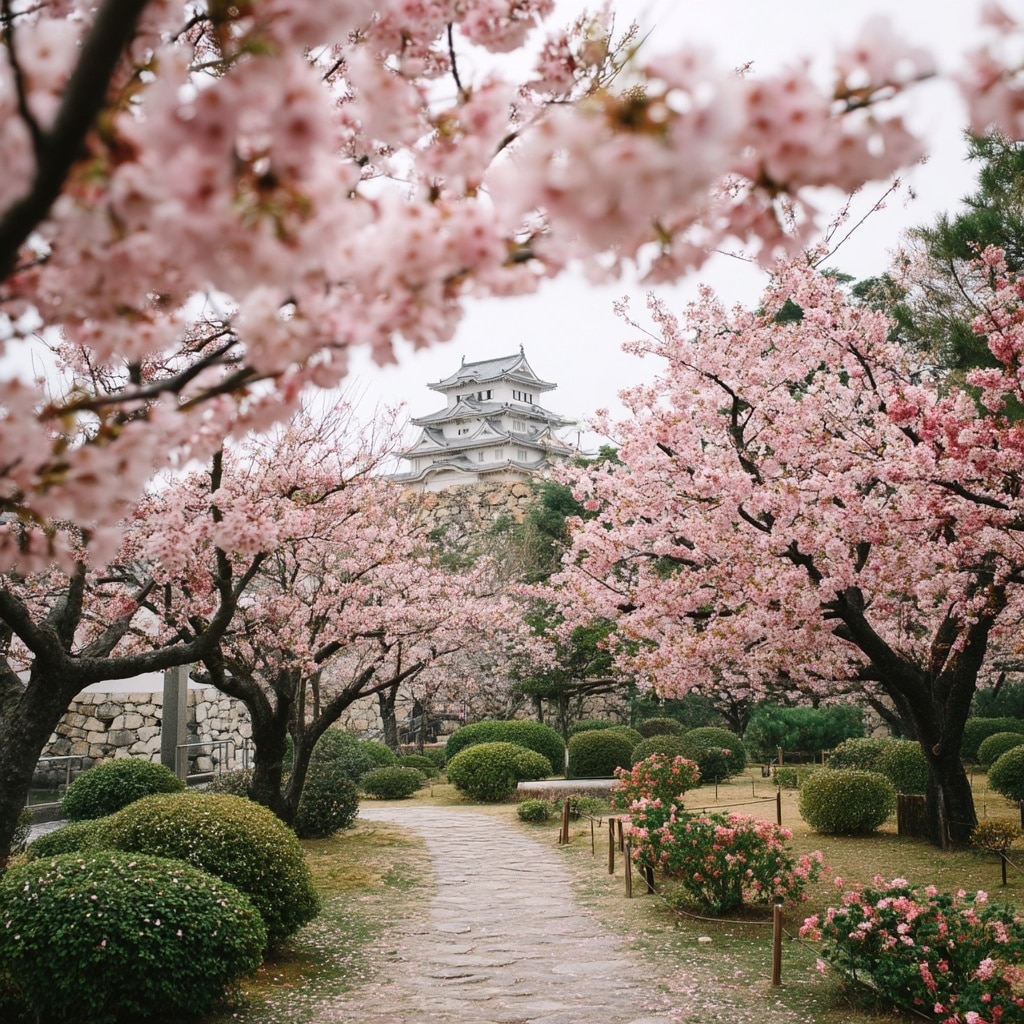Cherry blossom season in Japan is nothing short of magical. Each spring, delicate petals paint the landscapes in soft shades of pink, white, and even green, drawing admirers from around the world. While the term “cherry blossom” often conjures a single image, Japan is actually home to over 100 distinct varieties—each with its own bloom period, petal shape, and story. In this guide, we’ll walk you through five must-see types of cherry blossom trees, from iconic favorites to rare hidden gems, and where in Japan you can witness their breathtaking beauty in full bloom.
Table of Contents
1. Somei Yoshino (ソメイヨシノ)
The Somei Yoshino is the most beloved and widely planted cherry blossom tree in Japan. Recognized by its soft, pale pink petals that appear almost white from a distance, this variety signals the official arrival of spring for many Japanese cities. Originating from the Somei village near Tokyo in the 19th century, it has become a symbol of fleeting beauty and renewal.
This tree typically blooms from late March to early April, creating breathtaking views across parks, riversides, and historical landmarks. One of the most iconic places to witness a canopy of blooming Somei Yoshino trees is Hirosaki Park in Aomori Prefecture. With more than 2,600 trees and the picturesque Hirosaki Castle in the background, this location offers a stunning hanami (flower viewing) experience.
Travel Tip:
From Tokyo Station, take the Tohoku Shinkansen to Shin-Aomori Station, then transfer to the Ōu Line to reach Hirosaki Station. From there, it’s a short bus ride to the park entrance.
If you’re timing your visit with the early spring bloom, this classic cherry blossom is not to be missed.
2. Gyoiko (御衣黄)
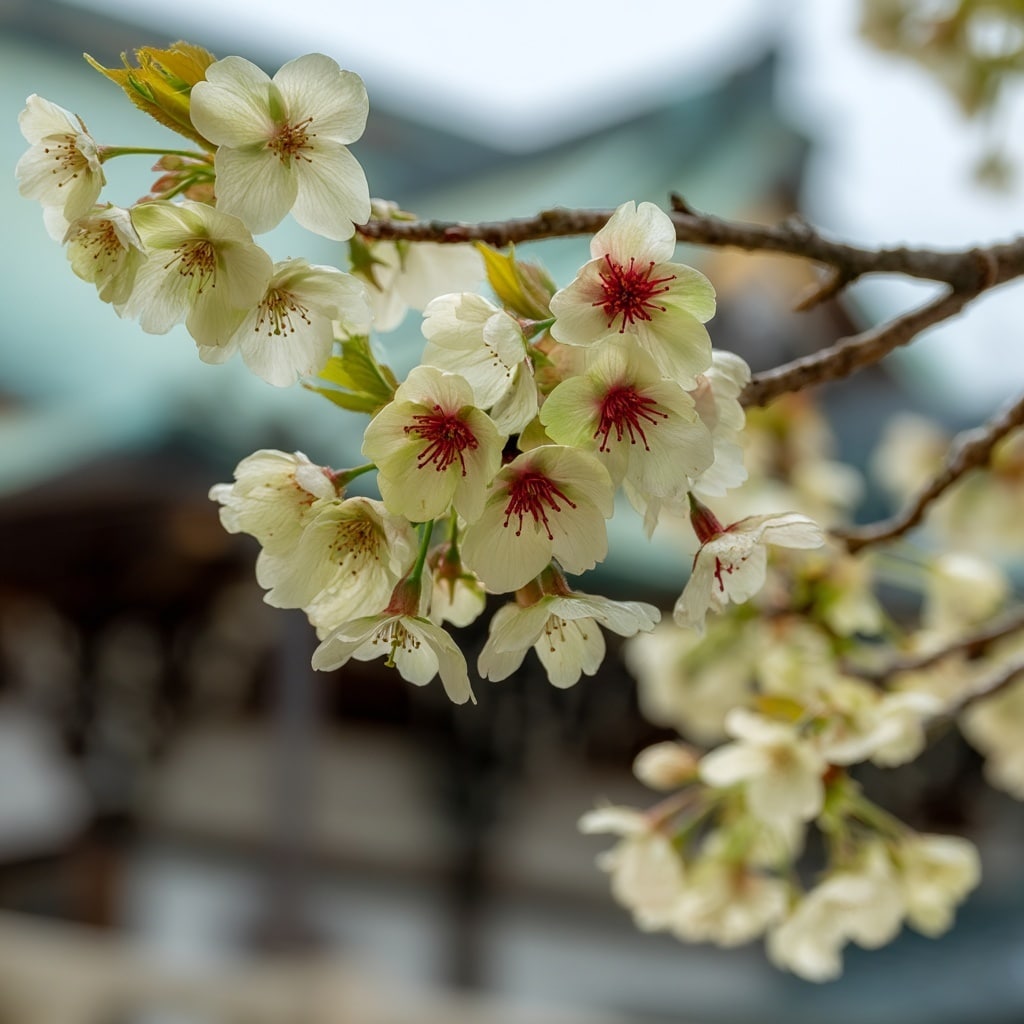
If you’re looking for a cherry blossom that breaks all the rules, the Gyoiko will surprise you. Unlike the typical pink varieties, Gyoiko blossoms are a light greenish-yellow hue—so subtle and elegant that they almost appear otherworldly. When in full bloom, a delicate red streak often emerges at the center, adding a beautiful contrast that makes this rare sakura truly memorable.
The name “Gyoiko” comes from the ceremonial robes worn by ancient nobility, as the flower’s pale green color resembled the exclusive garments of aristocrats. Historically cultivated at Ninnaji Temple in Kyoto, this variety blooms a little later in the season—from mid to late April—making it a perfect choice for travelers arriving after the typical sakura peak.
Where to See It:
Visit the Ninnaji Temple, a UNESCO World Heritage Site in Kyoto. Not only will you get to see the Gyoiko in its natural setting, but you’ll also be immersed in centuries of Japanese culture and architecture.
Getting There:
From Kyoto Station, take the Keifuku Electric Railroad (Randen) to Omuro-Ninnaji Station. It’s a short 6-minute walk to the temple from there.
For those seeking a rare and elegant cherry blossom, the Gyoiko offers a completely different kind of spring beauty.
3. Kawazuzakura (河津桜)

Can’t wait until spring? The Kawazuzakura is the answer for early bloom chasers. This vibrant cherry blossom variety flowers much earlier than most—from early February to early March—bringing a splash of bright pink to Japan during the tail end of winter. Its petals are deeper in color and larger than those of the common Somei Yoshino, making the trees stand out in spectacular fashion.
Kawazuzakura is native to Kawazu Town on the Izu Peninsula, where the annual Kawazu Cherry Blossom Festival celebrates the season’s first blooms. The event draws visitors from across Japan and abroad, with rows of these vivid trees lining the riverside paths, creating an unforgettable early spring stroll.
Where to See It:
Kawazu Town in Shizuoka Prefecture is the best-known location. Aside from the blossoms, the area is famous for its hot springs, perfect for a relaxing getaway.
Getting There:
Take the Limited Express Odoriko train from Tokyo Station directly to Kawazu Station. The ride takes about 2.5 hours, and the blossoms are just a minute’s walk from the station’s north exit.
If your trip to Japan falls before the typical bloom season, the Kawazuzakura offers a head start on enjoying the country’s famous cherry blossoms.
4. Shidarezakura (枝垂れ桜 / Weeping Cherry Blossom)
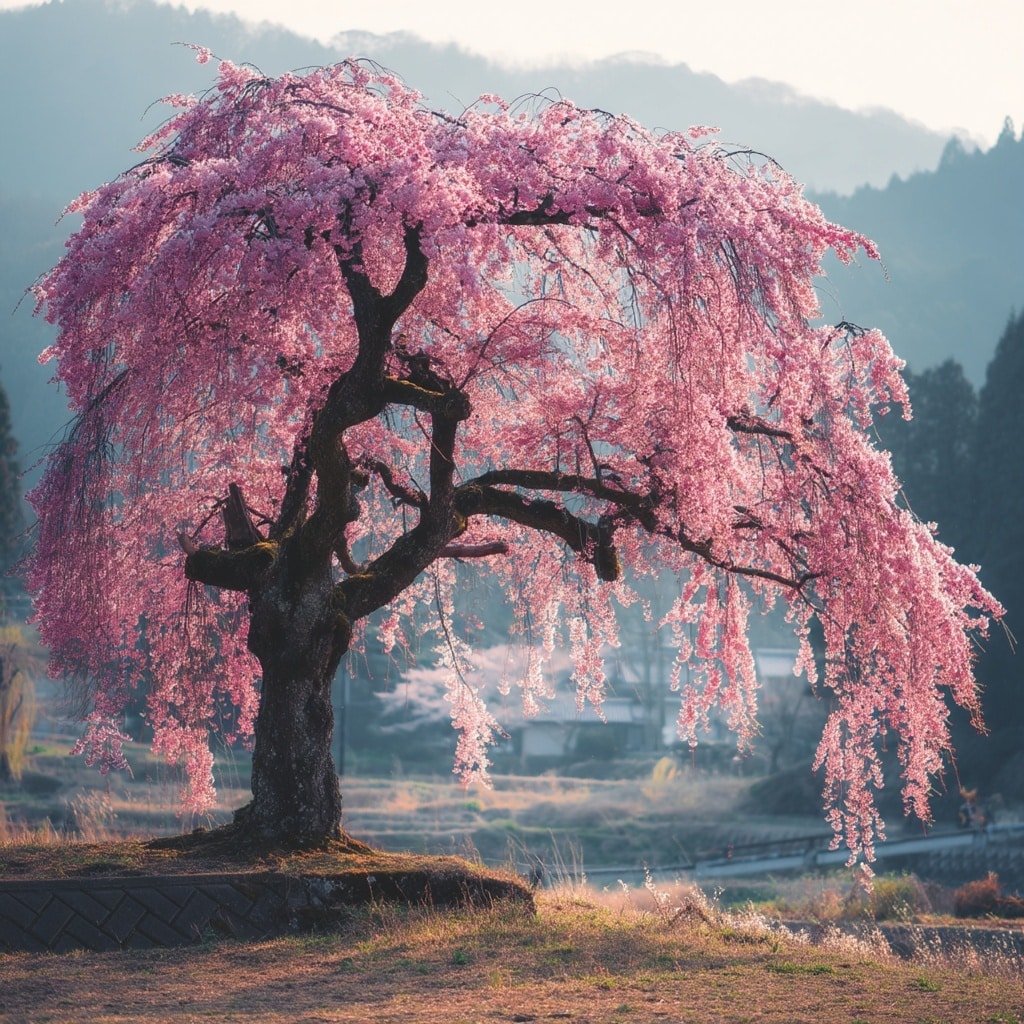
Graceful and dramatic, the Shidarezakura, or Weeping Cherry Blossom, adds an air of quiet elegance to springtime landscapes. With long, cascading branches that sway gently in the breeze, these trees create a natural curtain of blossoms, making them one of the most photogenic types of cherry blossom trees in Japan. Their petals usually bloom in soft pink tones, turning lighter and almost white as the flowers mature.
These trees aren’t just beautiful—they’re ancient. Some Shidarezakura are known to live hundreds of years, with the most famous, Miharu Takizakura in Fukushima Prefecture, believed to be over 1,000 years old. This single tree, standing tall in a rural field, attracts tens of thousands of visitors each spring for its sheer size and historical significance.
When to See It:
Shidarezakura generally bloom from early to mid-April, slightly after the Somei Yoshino.
Where to Go:
Visit Miharu Town in Fukushima to see the legendary Miharu Takizakura, one of the “Three Great Cherry Trees of Japan.”
Getting There:
From Tokyo Station, take the Tohoku Shinkansen to Koriyama Station, then transfer to the Ban-Etsuto Line bound for Ononiimachi. Get off at Miharu Station, and take a bus or taxi to the site.
For lovers of poetic beauty and living history, the Shidarezakura offers an unforgettable cherry blossom experience.
5. Yaezakura (八重桜 / Double Cherry Blossoms)
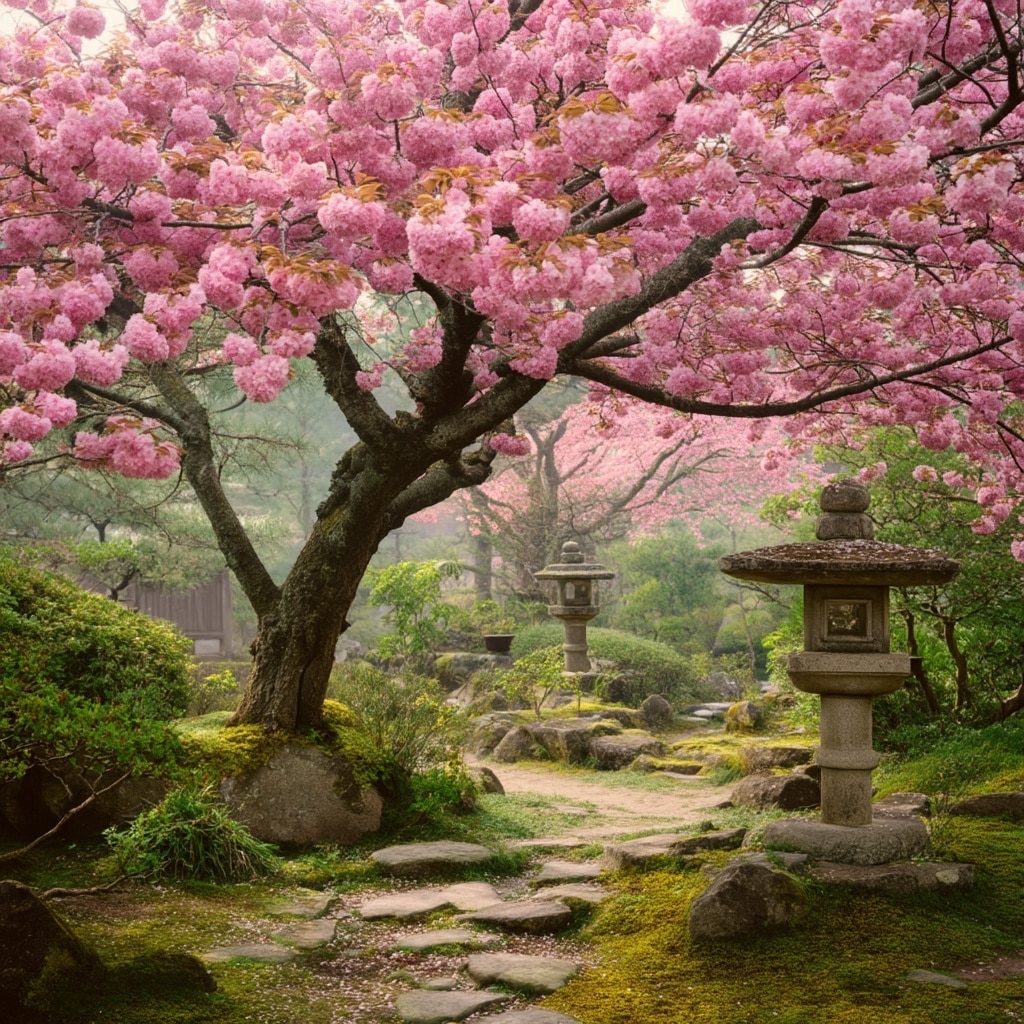
With layer upon layer of delicate petals, the Yaezakura, or Double Cherry Blossom, brings a luxurious flair to Japan’s springtime scenery. Unlike typical cherry blossoms, which have five petals, Yaezakura varieties boast 10 to 300 petals per bloom, creating a full, rounded appearance reminiscent of roses or peonies.
These blossoms bloom later than most, usually from mid-April to early May, making them perfect for travelers arriving after the peak sakura season. Their colors range from soft pink to vivid magenta, and even rare pale green varieties like Ukon fall under the Yaezakura umbrella.
Two especially prized cultivars are the Kikuzakura (Chrysanthemum Cherry Blossom) and Ukon, which can be found in one of Japan’s most celebrated traditional gardens: Kenrokuen in Kanazawa, Ishikawa Prefecture. This garden is a paradise of seasonal beauty, and its Yaezakura trees are a dazzling sight in late spring.
Where to See It:
Head to Kenrokuen Garden in Kanazawa City, where you’ll find not only Ukon and Kikuzakura trees, but also manicured landscapes rich in seasonal color.
Getting There:
Take the Hokuriku Shinkansen from Tokyo Station to Kanazawa Station. From there, hop on the Kanazawa University Line (Bus 93) and get off at Kenrokuen Shita. It’s just a 6-minute walk to the garden entrance.
If you’re hoping to extend your cherry blossom viewing well into spring, the Yaezakura will reward you with petals in abundance.
Final Thoughts
Whether you’re drawn to the fleeting elegance of the Somei Yoshino, the rare beauty of the Gyoiko, or the vibrant early blooms of the Kawazuzakura, Japan offers an unforgettable cherry blossom experience no matter when you visit during spring. Each variety has its own character, story, and season—making hanami (flower viewing) not just a tradition, but a personal journey.
By planning your travel around the bloom periods and exploring regional varieties, you’ll discover that cherry blossoms are much more than a symbol of spring—they’re living expressions of Japan’s history, geography, and timeless beauty.

